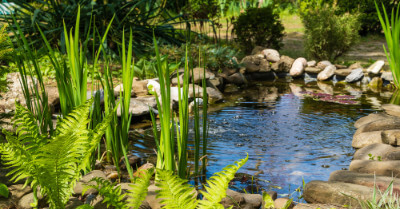Table of Contents
Sunflower Overview
Where Do Sunflowers Grow?
Sunflowers can grow and thrive anywhere in the United States. They tend to enjoy the warmer summer months and do well in hot weather. The best place for them to grow is open spaces that are dry such as prairies and meadows. However, many people will plant sunflowers in flower pots and gardens.
Origin
The sunflower falls under the genus Helianthus, which consists of approximately 70 different species of sunflowers. Sunflowers fall under the daisy family Asteraceae. The sunflower species are all native to North American and Central America, except for three species native to South America.
Appearance
Sunflowers are typically tall in appearance, and certain species can grow up to 120 inches in height. The flowers in the sunflower plant are actually multiple smaller flowers that give the appearance of the typical large sunflower. The smaller flowers tend to be a bright yellow, with the center disk being a darker yellow or maroon color. Most sunflowers are yellow in color, but there are species that are red, orange, and even purple.
Do Sunflowers Come Back Every Year?
There are two types of sunflowers, annual and perennial. Determining which type of sunflower you are planning to plant or which you have already planted will answer the question of whether the sunflower will come back every year.
Annual
An annual sunflower will not come back each year. Their name means that they only grow for one annual year and then they will die. Annual sunflowers will only bloom once, but occasionally if a seed falls from the plant before they die, then a new plant can grow from that seed. A great way to know if you have an annual sunflower species is by the name. Typically annual sunflowers will be labeled as Helianthus annuus.
Perennial
Perennial sunflowers will continue to come back every year as long as they are properly cared for. They do require adequate sunlight, hydration, and nutrition in order to thrive and continue to bloom every year.
Perennial sunflowers tend to not have as large and bright of flowers as annual sunflowers. However you can get a variety of flowers and colors with the perennial sunflower. Perennial sunflowers can be more aggressive and take over your garden if you are not careful, so it is important to keep an eye on the plant.
Many people choose to grow perennial sunflowers due to their being plenty of benefits, even outside of the fact they will come back each year, which is an added benefit.
Food Source
There are certain species of perennial sunflowers that can be a food source. A big one is the Helianthus tuberosus which is known as the Jerusalem Artichoke. They have edible roots and are harvested in the fall.
Ongoing Garden
Planting perennial sunflowers can provide a beautiful ongoing garden. Overall, sunflowers are very easy to care so they make an excellent option for a flower garden as they will continue to come back each year and require minimum maintenance.
Pollination Source
Planting perennial sunflowers will provide an excellent pollination source for pollinators. If you are interested in providing food and shelter for not only pollinators such as bees but also birds, then planting perennial sunflowers is a great option.
Caring for Sunflowers
Providing the proper care for your sunflowers is how you guarantee the plant will thrive and bloom each year if you have a perennial. Even if your sunflower plant is an annual sunflower, you will need to provide the right care so that your plant will in fact bloom one time.
When to Plant
It is a good idea to plant sunflowers once the danger of freezing temperatures has passed. In most regions, this time period will be sometime in spring, depending on where you live, but temperatures may not warm up until into the summer months in certain regions.
The ideal way to determine the correct time to plant is when the soil is between 55 and 60 degrees Fahrenheit. You will want to plant the sunflower seeds between 1 to 2 inches deep in the soil and plant your rows approximately 2 to 3 feet apart. The spacing recommendations may vary slightly depending on the particular species of sunflower you are planting.
Soil
Sunflowers prefer soil that is more alkaline with a PH level of 6.0 to 7.5. They also thrive in nutrient-rich loam soil. This means the soil is an even mixture of sand, silt, and clay. Loam soil will retain nutrients while also retaining a good amount of moisture for the plant.
Fertilizing is not necessary for sunflowers. However, it can help to encourage blooming. Sunflowers are known to need plenty of nitrogen. Therefore fertilizing a sunflower with added nitrogen will help to encourage plenty of growth. Too much nitrogen can end up being harmful and discourage the blooming of the plant.
Sunlight
Sunflowers typically prefer direct sunlight for several hours per day. If you can find a spot where your plant will get 6 to 8 hours of direct sunlight, your plant will thrive. They enjoy plenty of warm sunshine in order to bloom well.
Blooming
If your sunflower is an annual sunflower, then it will bloom the first year you plant it. However, perennial sunflowers will not typically bloom until least after the first year of being planted, but some will not bloom for two years.
Hydration
If your plant has been newly planted and is small, you can simply water approximately 3 to 4 inches from the root. As the plant grows and matures, you will want to give the plant a deep watering approximately once per week. You can water the plant with a few gallons of water unless you have recently experienced a good amount of rain.
Recent Articles



















